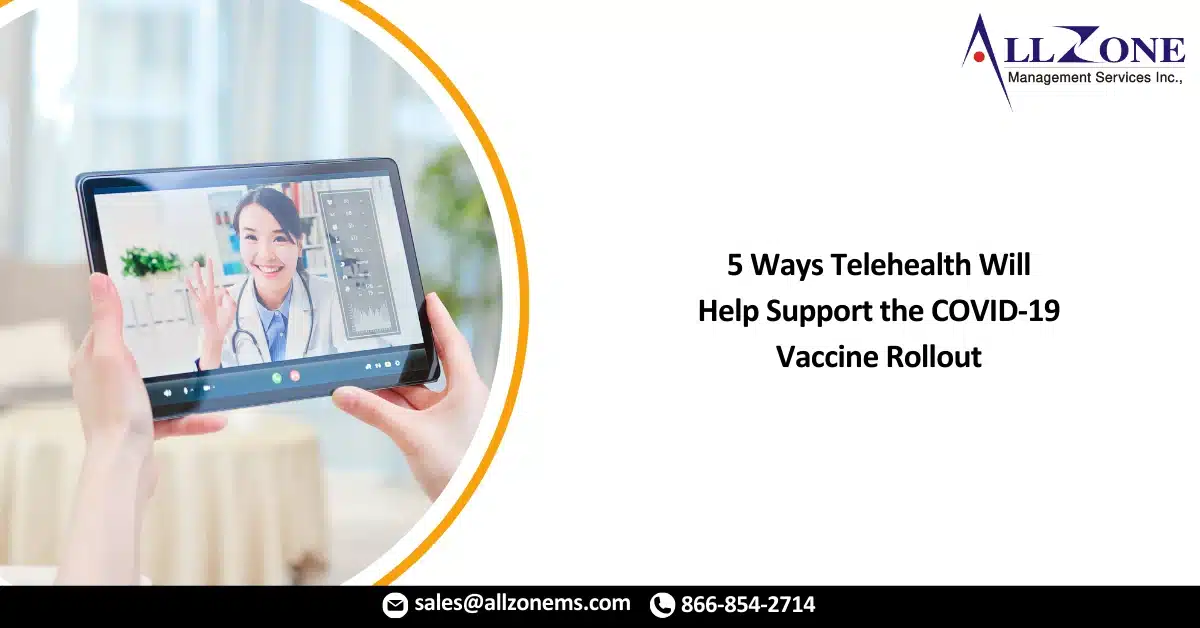Our healthcare system has seen an unprecedented rise in the use of telemedicine since the onset of COVID-19. Doctors are now doing between 50 to 175 times telehealth appointments than they did prior to the pandemic, according to a recent study by McKinsey.
Considering how reliant we’ve become on virtual visits as a clinical tool, I decided to chat with a few of my colleagues about how telehealth might support the vaccine rollout efforts. After all, getting vaccinated still requires a patient’s physical presence in the office. And with nearly 3 million doses of approved vaccines having already been shipped across the U.S., we’re now beginning one of the largest vaccination efforts in medical history.
What I heard confirmed my hunch: telehealth will play a critical role in managing vaccine distribution and supporting patients through a simple, but a potentially scary process, for some.
Here are the 5 most important ways that telemedicine will help support the rollout and will prove instrumental in getting the vaccine to the people who need it the most:
1. Telehealth Will Help Us Address Patient Concerns
Experts estimate at least 70% of the U.S. population needs to be vaccinated to achieve herd immunity or the point at which enough people are protected that the virus can be held in check. But according to a recent poll from AP-NORC, only 47% of Americans are ready to roll up their sleeves when their turn comes.
Among the Americans who said they won’t get vaccinated, 43% cited they were concerned that the vaccine itself could infect them with COVID-19 – which simply isn’t true. Telemedicine can help facilitate patient education through video conversations with their doctor by separating the facts from social media fiction.
2. Supporting High-Risk Patients
Patients with impaired immune systems are regularly warned they cannot take live-virus vaccines. With telemedicine, doctors can (virtually) sit down with a patient and their family and discuss in detail how mRNA COVID-19 vaccines are fundamentally different than live-virus vaccines in how they work.
It’s especially important for patients who already suffer from conditions that might leave them immunocompromised, to understand that the current vaccines are not live-virus vaccines. They can have important discussions about what is their best approach to vaccination.
3. Supporting Women’s Health.
Based on what we know at this time, pregnant women may be at an increased risk for severe illness from COVID-19 infection compared to non-pregnant women. There may also be an increased risk for adverse pregnancy outcomes among women who get sick with the virus during pregnancy.
So, it’s understandable that an expecting mother or someone planning to be pregnant may want to consider receiving the mRNA vaccine. In addition to the multitude of questions of usual questions surrounding pregnancy, expecting mothers should be prepared to speak about the merits of vaccination with their doctor. Offering convenient and easy access to their doctor via telehealth will help pregnant women determine ultimately what is best for them and the health of their baby.
4. Patient Follow-Up.
Once a patient gets their shots, physicians will need to offer follow up, especially if they are experiencing any side-effects or symptoms. While exceedingly rare, there have already been reported cases of healthcare workers that were hospitalized due to severe allergic reactions they experienced after receiving the vaccine.
Common symptoms that have been reported during one study of Pfizer’s vaccine included fatigue, headaches, and chills. Based on current FDA data 10-12% of patients who receive the vaccine will experience these symptoms. Telemedicine can help in managing patient care post-vaccination by enabling doctors to evaluate patients at a moment’s notice via video call and determine whether or not their symptoms warrant further follow up.
5. Increasing Compliance.
Patient education and communication are known to increase compliance and help improve health outcomes. Telehealth will reinforce strong doctor-patient communication, all while increasing compliance. With the use of telehealth, we can continue to make the vaccine distribution process more efficient over time.
For More Information: https://www.medicaleconomics.com/view/5-ways-telehealth-will-help-support-the-covid-19-vaccine-rollout

